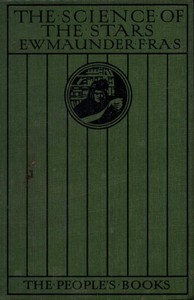| Summary |
"The Science of the Stars" by E. Walter Maunder is a scientific publication written in the late 19th century. This work delves into the history and development of astronomy, examining ancient celestial observations and theories, as well as the evolution of astronomical understanding leading up to modern concepts. It likely serves as an educational text for students and enthusiasts interested in the foundations of astronomy and the significant discoveries that have shaped our understanding of the universe. The opening of the book lays the groundwork for astronomy by discussing humanity's earliest observations of the celestial bodies. Maunder emphasizes the challenges faced by ancient astronomers, who began their journeys with only the simplest observations—like the movements of the Sun and Moon. He outlines how these early observations led to questions about the nature of celestial objects, prompting a gradual accumulation of knowledge that paved the way for more sophisticated inquiry. The chapter touches on the etheric connection between humanity's understanding of the stars and the practical implications of such knowledge, such as agricultural calendars and navigation. Overall, the beginning illustrates the enduring human fascination with the cosmos and sets the stage for a deeper exploration of the scientific principles that govern these celestial phenomena. (This is an automatically generated summary.)
|

